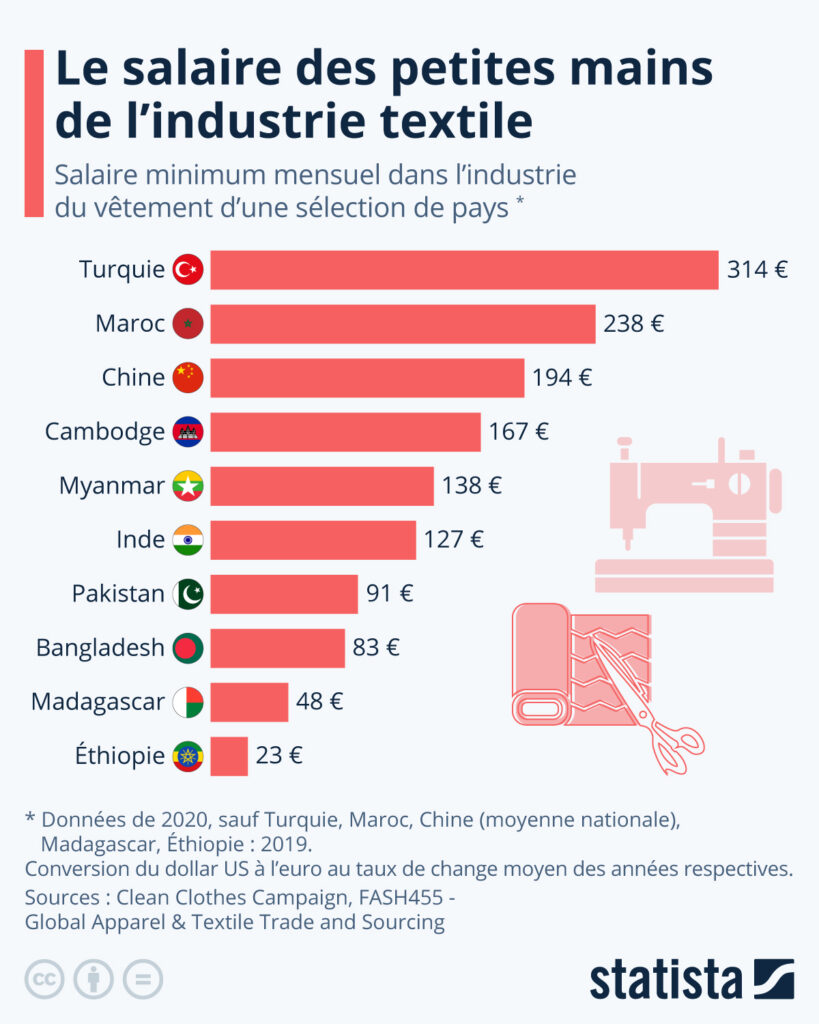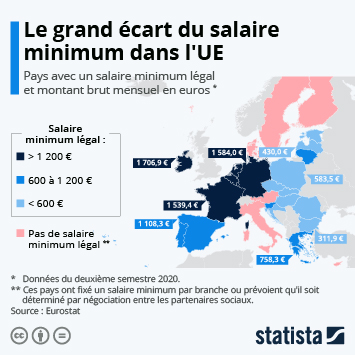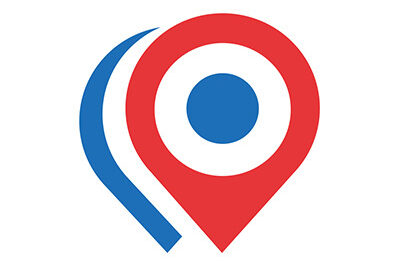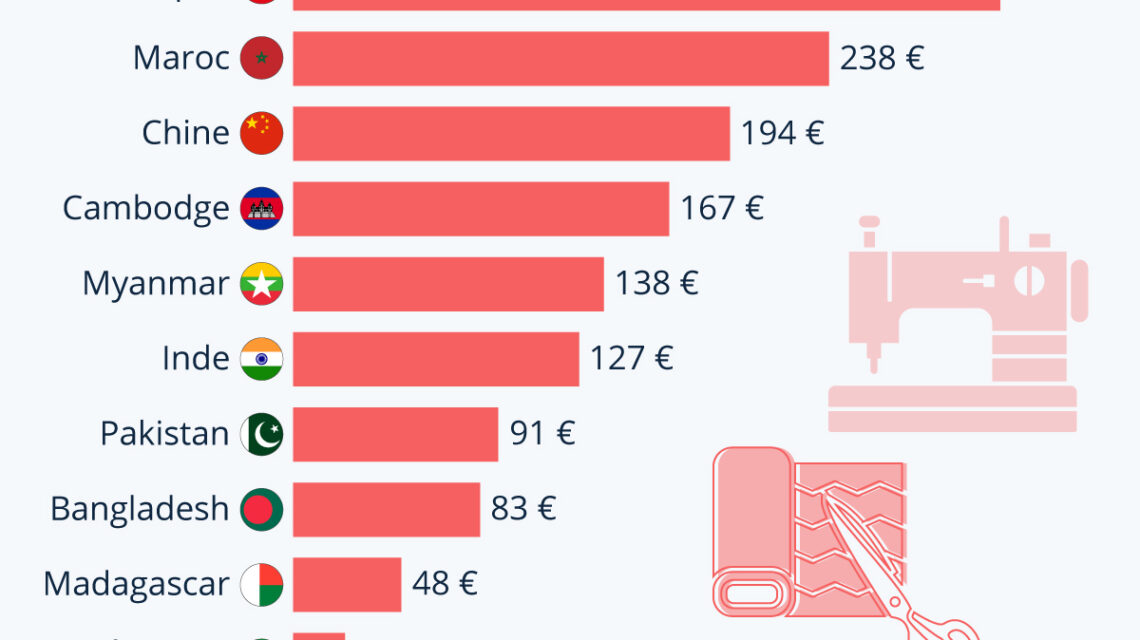Marque française vs marque fabriquée en France, à qui profite la confusion ? 3 avril 2023 – Publié dans: Les valeurs d'Headoniste
A défaut de fabriquer en France, des marques de casquettes produites en Bulgarie ou en Chine arborent des logos tricolores en jouant sur la subtilité entre marque française et marque fabriquée en France. Explications.
Les casquettes sont souvent considérées comme un accessoire très populaire, utilisé dans le monde entier pour protéger du soleil et ajouter une touche de style à une tenue. Mais, elle est aussi devenue un accessoire de mode, fabriquée dans des ateliers traditionnels avec des matériaux nobles, comme le cuir, la laine cachemire, le lin ou l’Alpaga.
Résultats, la gamme de prix des casquettes peuvent s’étendre de quelques euros (2,5 euros chez Shein) à plus d’un millier d’euros dans les marques de luxe.
Avec une telle gamme de prix, difficile de faire la différence entre les marques.
Concrètement, trois éléments sont déterminants pour évaluer le rapport qualité-prix d’une casquette.
D’abord sa composition. La matière première représente environ 15 % du prix de la casquette. Une casquette nécessite environ 20 cm de tissus, des biais, des doublures, un système de fixation arrière, etc.
De quelques centimes pour les casquettes en simple coton, les prix des matières comme l’Alpaga dépassent les 50 euros le mètre. Comptez entre 60 et 80 euros le mètre pour les purs cachemires.
Son mode de fabrication. Avec des tissus coupés en masse, à la chaîne, dans des usines automatisées en Asie ou en Europe de l’Est, le temps de montage d’une casquette ne dépasse pas quelques minutes.
Dans un atelier traditionnel, il faut entre 60 et 90 minutes de main d’œuvre pour construire une vraie casquette.
A titre de comparaison, il est intéressant de comparer les coûts de main-d’œuvre dans l’industrie textile.


Le marketing de la marque. Le prix d’une casquette dépend évidemment de l’attractivité de la marque. Ainsi Suprême ou Off-White peuvent vendre des casquettes Made in China ou Viet-Nam aussi cher que celles des marques de luxe traditionnelles fabriquées en France ou en Italie.
A ces trois éléments, on peut ajouter l’argument du Made in France.
Tout d’abord, il est important de comprendre la distinction entre une marque française de casquette et une marque de casquette fabriquée en France.
Une marque française de casquette peut être conçue en France, mais elle peut être produite dans un autre pays. En revanche, une marque de casquette fabriquée en France doit être entièrement produite en France, depuis la conception jusqu’à la fabrication.
Un label made in France garantie
Le label “Made in France” est réglementé par la loi française, qui définit les critères à remplir pour qu’un produit puisse être considéré comme “Made in France”. Voici les principaux critères à prendre en compte :
- Le produit doit être entièrement fabriqué en France. Cela signifie que toutes les étapes de la production, y compris la conception, la fabrication et l’assemblage, doivent avoir lieu en France.
- Au moins 50% du coût de revient du produit doit être généré en France. Le coût de revient comprend les coûts de matières premières, de main-d’œuvre et autres frais de production.
- Le produit doit avoir subi une transformation suffisante en France. Cela signifie qu’il doit avoir acquis une valeur ajoutée significative lors de sa fabrication en France, par opposition à une simple étape d’assemblage ou de finition. Ainsi l’ajout d’une broderie ou de décorations sur une casquette ne suffit pas.
- Le produit doit porter une mention claire et visible indiquant son origine française, telle que “Made in France”, “Fabriqué en France” ou “Produit en France”.
Le but de ces critères est de garantir aux consommateurs que les produits “Made in France” sont effectivement fabriqués en France et répondent à des normes de qualité élevées.
La notion de marque française est trompeuse
La différence entre ces deux types de marques est importante pour plusieurs raisons. Tout d’abord, une marque française de casquette peut être plus accessible en termes de prix car elle peut être produite dans un pays où la main-d’œuvre est moins chère.
C’est notamment le cas pour les marques qui assurent une production « Made in Europe », dans les pays de l’Est comme la Bulgarie, qui pratiquent des salaires 4 à 5 fois inférieurs à ceux des Français.
Cela peut signifier que les matériaux utilisés dans la casquette sont de moindre qualité, ou que les conditions de travail ne sont pas aussi bonnes que celles offertes par une entreprise française qui produit localement.
Le fabriqué en France, gage de qualité
En revanche, une marque de casquette fabriquée en France peut être plus chère car les coûts de production sont plus élevés en France en raison des normes de travail et des salaires plus élevés. Cependant, cela signifier que la qualité de la casquette est meilleure et que les travailleurs bénéficient de meilleures conditions de travail.
En plus de la qualité et du prix, il y a également la question de la durabilité. Les casquettes fabriquées en France ont tendance à être plus durables car elles sont fabriquées avec des matériaux de qualité supérieure qui répondent à des normes techniques très rigoureuses, notamment pour les qualités des tissus et leur traitement, et avec une attention particulière aux détails, notamment dans les doublures. Cela signifie que la casquette durera plus longtemps, ce qui est important si vous cherchez à investir dans un accessoire que vous pourrez utiliser pendant des années.
Le choix entre une marque française de casquette et une marque de casquette fabriquée en France dépend de vos préférences personnelles.
Si vous êtes à la recherche d’une casquette à un prix abordable et que la provenance n’est pas une priorité, une marque française de casquette produisant ces produits en Bulgarie ou au Viet Nam pourrait être un bon choix. Cependant, si vous êtes prêt à investir dans une casquette de qualité supérieure et que vous êtes préoccupé par les conditions de travail des travailleurs, une marque de casquette fabriquée en France est surement un meilleur choix.
C’est la conviction qui nous guide chez Headoniste. Nous avons fait le choix, depuis notre création, de produire toutes nos casquettes en France, dans des ateliers d’exception, classés EPV, entreprises du patrimoine vivant. Autant pour la qualité et la régularité des productions que pour la dimension écologique et sociétale. Nous sommes la seule marque française de casquettes à produire exclusivement en France.



1 commentaire
Pourquoi choisir une casquette Made in France en 2025 ? juin 22, 2025 - 10:52
[…] En savoir plus sur la marque👉 Voir nos casquettes les plus […]